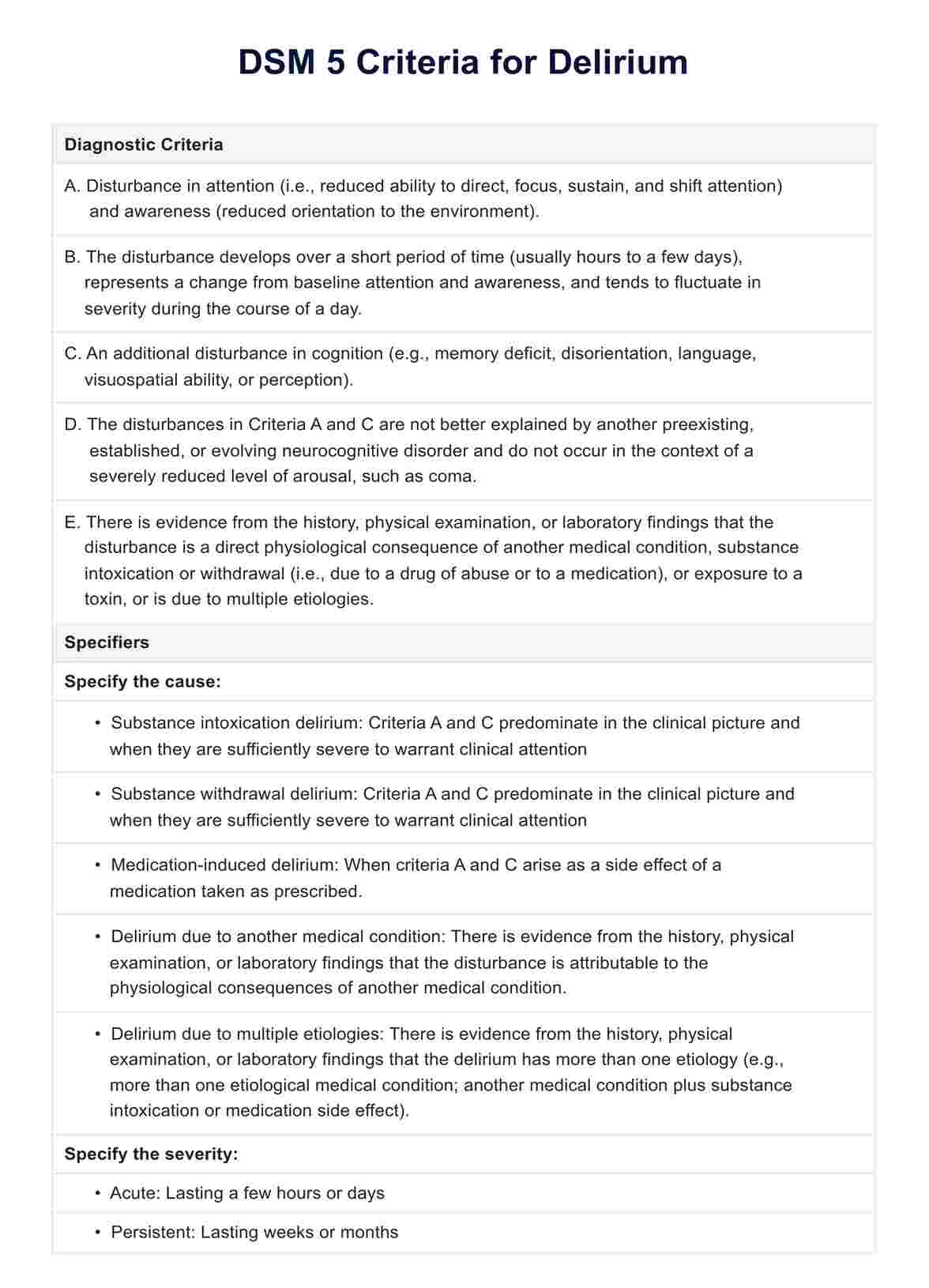Delirium can often be cured by treating the underlying cause and managing symptoms, but early detection and intervention are crucial for successful outcomes.

DSM 5 Criteria for Delirium
Discover the DSM 5 Criteria for Delirium with our free template. Ideal for mental health professionals seeking a quick reference guide for patient care.
Use Template
DSM 5 Criteria for Delirium Template
Commonly asked questions
The DSM-5 criteria for delirium include a disturbance in attention and awareness, a change from baseline cognitive function, and evidence that the disturbance is a direct physiological consequence of another medical condition or substance use.
The DSM-5 delirium criteria emphasize the importance of inattention and reduced awareness of the environment, and they provide a broader list of etiological types compared to DSM-4.
EHR and practice management software
Get started for free
*No credit card required
Free
$0/usd
Unlimited clients
Telehealth
1GB of storage
Client portal text
Automated billing and online payments











